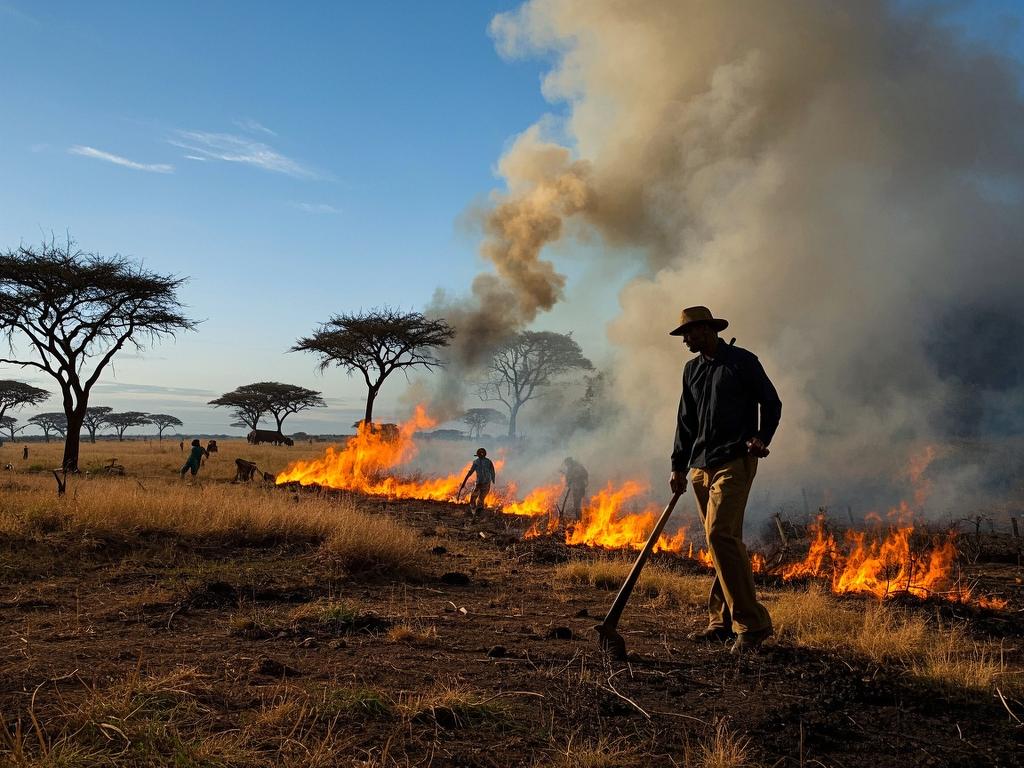
# The Vast Savannahs of Africa: A Continent's Grassland Heritage Threatened
Hey there, fellow nature enthusiasts! Today, we're diving deep into the heart of Africa's grasslands, those vast savannahs that have been the cradle of life for countless species. But here's the catch - these iconic landscapes are under serious threat, and it's time we took notice.
Let's start with some mind-blowing stats. Africa's savannahs cover an area of over 500 million hectares, making them one of the largest ecosystems on the planet. They are home to a staggering array of wildlife, from the majestic lions and elephants to the elusive cheetahs and giraffes. These grasslands also play a crucial role in regulating the global climate, storing vast amounts of carbon and helping to mitigate the effects of climate change.
But despite their importance, Africa's savannahs are facing a triple threat: habitat loss, poaching, and climate change. And it's not just the animals that are suffering - the people who depend on these grasslands for their livelihoods are also feeling the pinch.
Habitat loss is perhaps the most pressing threat. As human populations grow and expand, more and more land is being converted for agriculture, livestock grazing, and urban development. This is destroying the natural habitats of countless species, pushing them to the brink of extinction. In some areas, the savannahs have been reduced to just a fraction of their former size, and the remaining patches are often fragmented and isolated, making it difficult for wildlife to move and find food.
Poaching is another major problem. The illegal trade in wildlife products, such as ivory, rhino horn, and tiger bone, is a multi-billion-dollar industry that is driving many species to extinction. In Africa, elephants and rhinos are among the most targeted animals, with poachers killing them in large numbers for their valuable tusks and horns. This not only decimates the populations of these iconic species but also disrupts the delicate balance of the ecosystem.
Climate change is the third threat, and it's perhaps the most insidious of all. Rising temperatures, changing rainfall patterns, and more frequent extreme weather events are having a profound impact on the savannahs. Droughts are becoming more common, making it difficult for plants and animals to survive. Fires are also becoming more intense and destructive, wiping out large areas of vegetation and killing off wildlife. And as the climate continues to change, the future of Africa's savannahs looks increasingly uncertain.
So, what can we do to save Africa's savannahs? Well, the first step is to raise awareness about the problem. We need to educate people about the importance of these grasslands and the threats they face. We also need to encourage governments, businesses, and individuals to take action to protect them.
One way to do this is to support conservation organizations that are working on the ground in Africa. These organizations are doing important work to protect wildlife, restore habitats, and promote sustainable development. By donating to these organizations or volunteering your time, you can make a real difference.
Another way to help is to reduce our consumption of products that contribute to the destruction of the savannahs. This includes things like palm oil, which is often produced on land that has been cleared from the rainforests and savannahs. By choosing products that are sustainably sourced, we can help to reduce the demand for these products and protect the environment.
Finally, we need to take action to address climate change. This means reducing our carbon footprint by using renewable energy, conserving energy, and reducing waste. We also need to advocate for policies that will help to reduce greenhouse gas emissions and mitigate the effects of climate change.
In conclusion, Africa's savannahs are a precious natural heritage that we must protect at all costs. The threats they face are real and urgent, but with the right actions and collective efforts, we can make a difference. So, let's all do our part to save these iconic landscapes and the amazing wildlife that calls them home. Together, we can ensure that future generations will be able to experience the wonder and beauty of Africa's savannahs for themselves. What are your thoughts on this? Let's start a conversation and share our ideas on how we can save these incredible grasslands!
Now, let's take a moment to appreciate the beauty of Africa's savannahs. Picture a vast expanse of golden grass stretching as far as the eye can see, dotted with acacia trees and waterholes. In the distance, a herd of zebras gallops across the plain, their stripes blending in with the grass. The sun beats down, casting a warm glow over the landscape. It's a sight that is both breathtaking and awe-inspiring.
But it's not just the beauty of the savannahs that makes them so special. They are also a vital part of our planet's ecosystem. These grasslands are home to a diverse range of plant and animal species, many of which are found nowhere else on earth. They play a crucial role in regulating the global climate, storing carbon, and providing habitat for wildlife.
So, let's all do our part to protect these amazing landscapes. Whether it's by supporting conservation organizations, reducing our consumption of products that harm the environment, or taking action to address climate change, every little bit helps. Together, we can ensure that Africa's savannahs continue to thrive for generations to come. What are you going to do to make a difference? Share your thoughts and ideas in the comments below!

